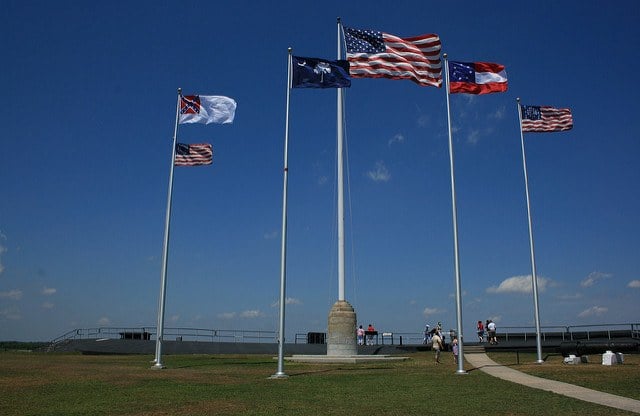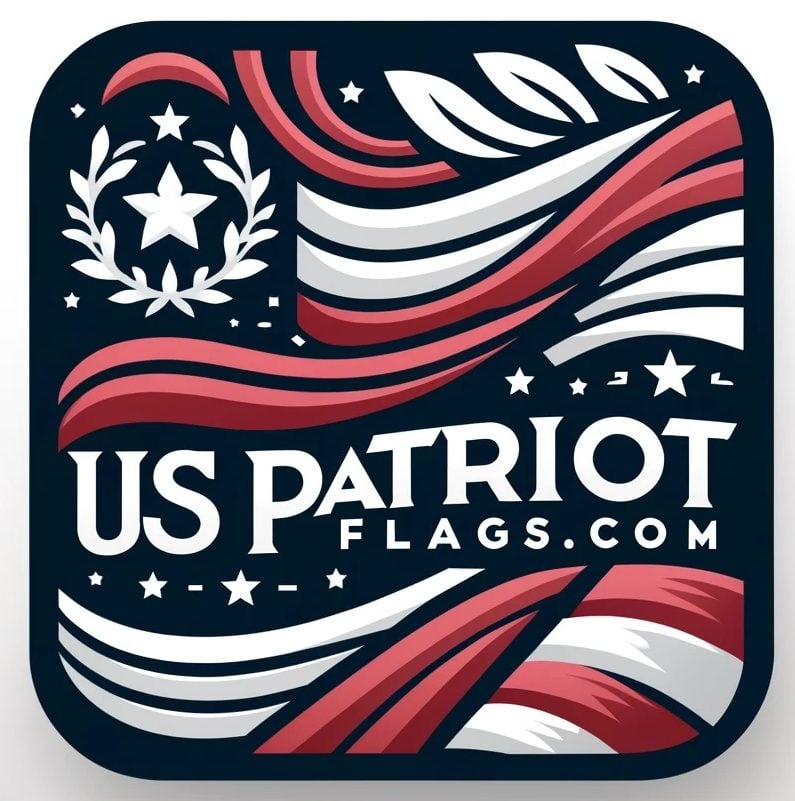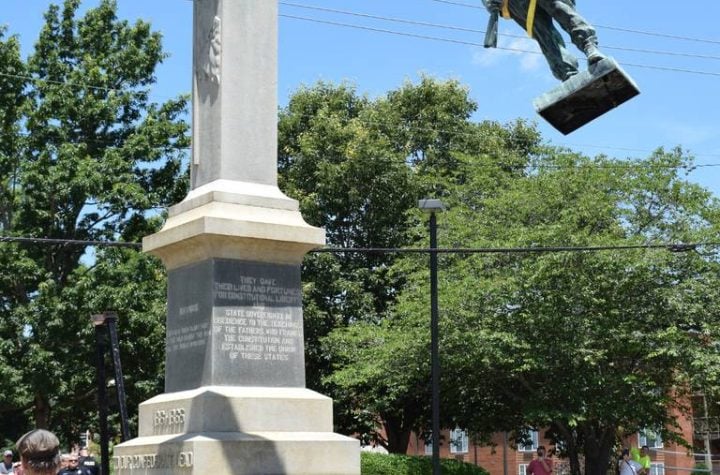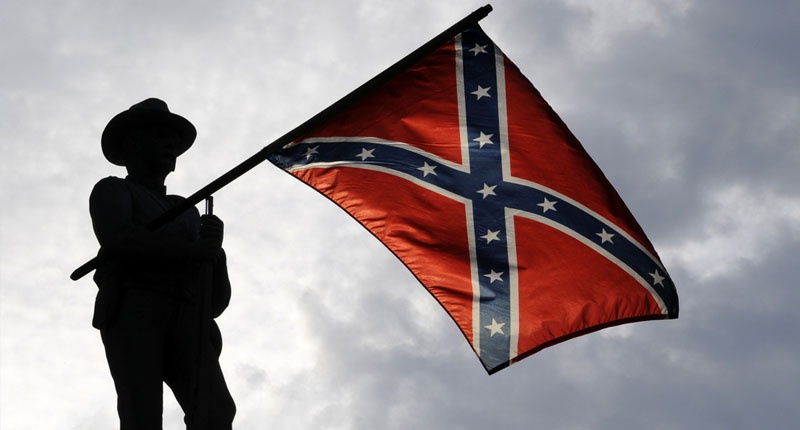
Confederate batteries opened fire. The first shots missed their target, but gunners soon established the range and shells began bursting on the ramparts of Fort Sumter. Soon the stronghold was ringed with fire and smoke, geysers of stone, brick and mortar flying skyward.
This was the scene in Charleston harbor in the early hours of April 12th, 1861. The American Civil War had begun.

After a couple of hours, the guns of Fort Sumter began returning fire. When Captain Seymour and his men came to replace Captain Doubleday’s detachment of gunners, Seymour dryly asked, “Doubleday, what in the world is the matter here, and what is all this uproar about?”
Doubleday replied, “There is a trifling difference of opinion between us and our neighbors opposite, and we are trying to settle it.”
 Flying over Sumter during the 34 hours of bombardment was a 33-star flag of the United States. It had a distinctive “diamond” pattern of stars. We can reproduce it in modern replicas because the original flag has been preserved and maintained by the National Park Service.
Flying over Sumter during the 34 hours of bombardment was a 33-star flag of the United States. It had a distinctive “diamond” pattern of stars. We can reproduce it in modern replicas because the original flag has been preserved and maintained by the National Park Service.
At about 1:00 P.M. on April 14th a shot snapped Sumter’s flagpole, bringing the Stars and Stripes down. A temporary pole was rigged, and soon the flag was once again waving in the wind.
The Federals were nearly out of food, and had no means of silencing the enemy guns. Inside the fort, fires were out of control, and most of the gunpowder had been tossed into the harbor to prevent it from exploding. The Union gunners were so harassed by the smoke and heat that by late morning they were face-down with wet handkerchiefs to their faces; nonetheless, they kept returning fire. The Rebels admired the defenders’ perseverance so much that they began cheering every shot from Sumter.
At one point Major Anderson and his officers had calculated how many troops it would take to resupply the fort and oppose the Confederates. The Lieutenants gave numbers between 2000 and 5000. Captains Doubleday and Foster guessed it would take 10,000 men. Major Anderson, the fort’s commander and a very seasoned veteran, said he would not risk fewer than 20,000 troops. The calculations of the more experienced officers meant that defending the fort was impossible: the entire U.S. Army at the time totaled 16,000 officers and men, most of them stationed in the west.
So it was that on the 14th surrender of the fort was arranged. The Federals had defended it with honor, but the situation was hopeless.
That same day the Charleston Volunteer Guard entered the fort, and their flag was the first Confederate  banner to be displayed at Fort Sumter. Private Byrd hung the Palmetto Flag from the parapet. This is another flag pattern we know, and which is still proudly flown.
banner to be displayed at Fort Sumter. Private Byrd hung the Palmetto Flag from the parapet. This is another flag pattern we know, and which is still proudly flown.
The Palmetto Flag was replaced the next day by the Confederate First National Flag, the Stars and Bars. We actually have a photo of this flag over Sumter, taken on April 15th, 1861.
 Another flag which flew over Ft. Sumter during the Civil war was the Confederate 2nd National Flag, adopted in 1963.
Another flag which flew over Ft. Sumter during the Civil war was the Confederate 2nd National Flag, adopted in 1963.
Today we can see the 33-star USA and Confederate National flags flying on the restored fort in Charleston Harbor, along with the current USA flag, and one from the American Revolutionary War.






Put them all up confederate flag